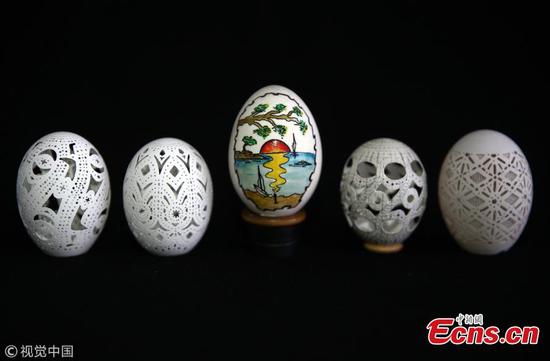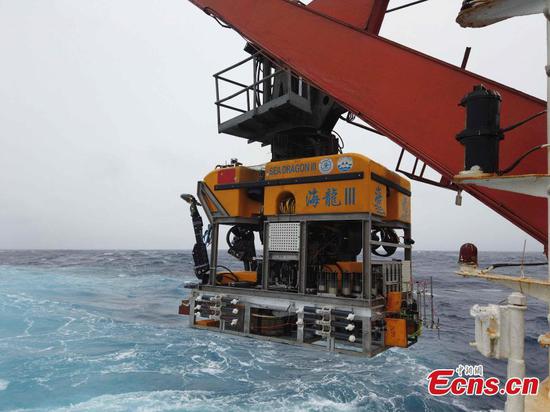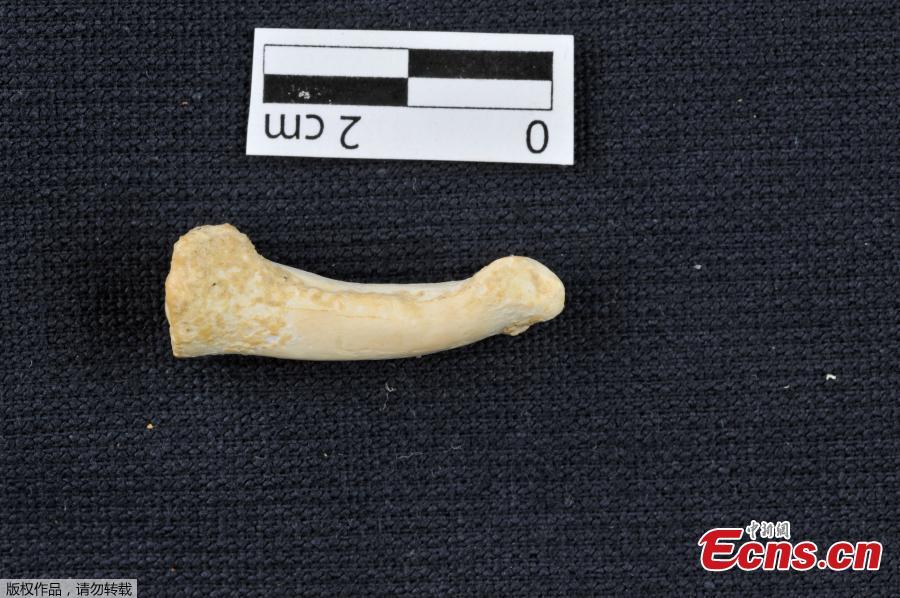
A proximal foot phalanx of Homo luzonensis, showing the longitudinal curvature of the bone. (Photo/Agencies)
Researchers in the Philippines announced that they have discovered a species of ancient human previously unknown to science, April 10, 2019.
The small-bodied hominin, named Homo luzonensis, lived on the island of Luzon at least 50,000 to 67,000 years ago. The hominin—identified from a total of seven teeth and six small bones—hosts a patchwork of ancient and more advanced features. The landmark discovery, announced in Nature, April 11, 2019, makes Luzon the third Southeast Asian island in the last 15 years to bear signs of unexpectedly ancient human activity.
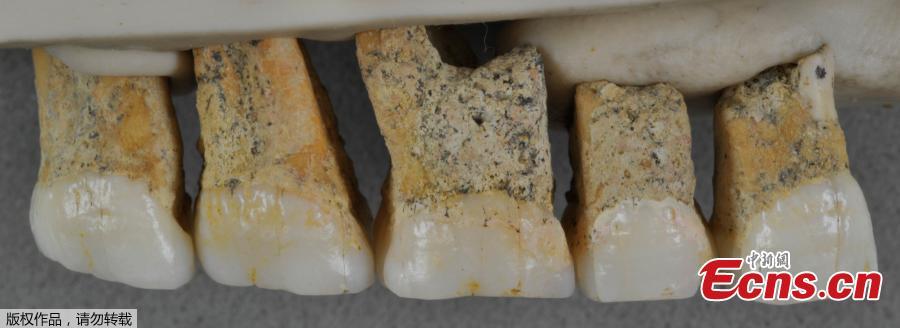
From right to left, two premolars and three molars from the upper right jaw of the same Homo Luzonensis adult. (Photo/Agencies)
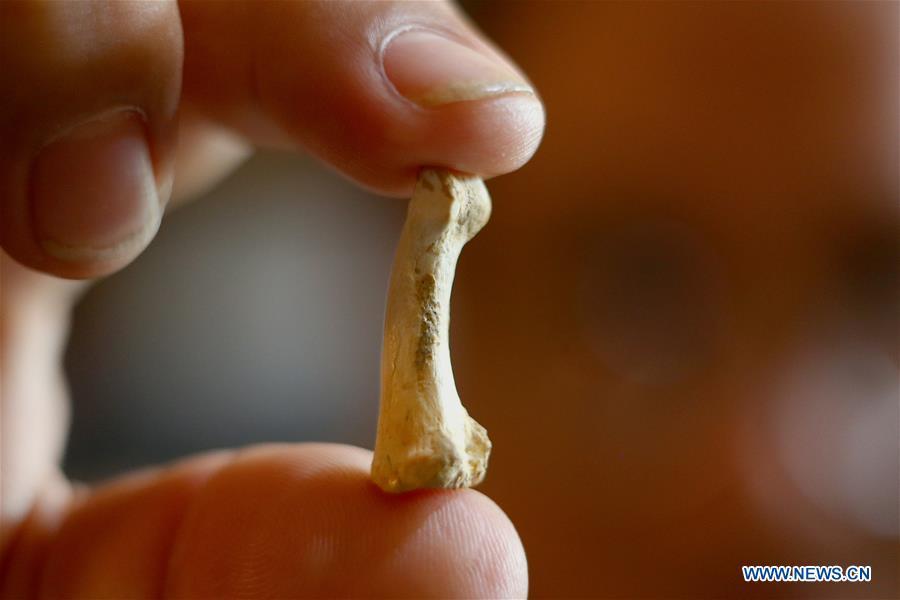
Filipino archeologist Armand Mijares shows a foot bone as part of the set of fossils of a newly discovered human species called Homo luzonensis at the University of the Philippines in Quezon City, the Philippines, April 11, 2019. Found in Callao Cave on Luzon Island, the 50,000-year-old remains belong to a now extinct species of human. (Xinhua/Rouelle Umali)
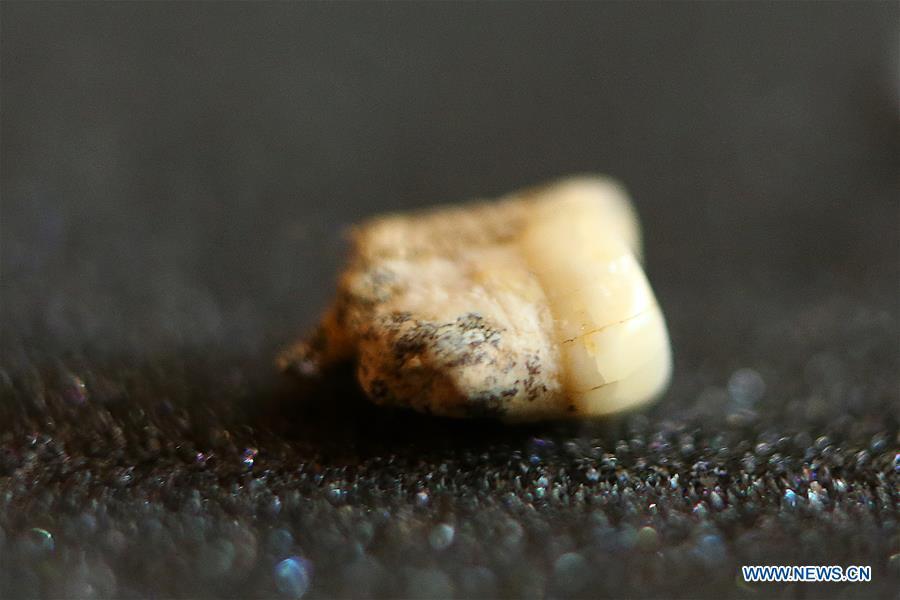
A premolar tooth is seen as part of the set of fossils of a newly discovered human species called Homo luzonensis at the University of the Philippines in Quezon City, the Philippines, April 11, 2019. Found in Callao Cave on Luzon Island, the 50,000-year-old remains belong to a now extinct species of human. (Xinhua/Rouelle Umali)
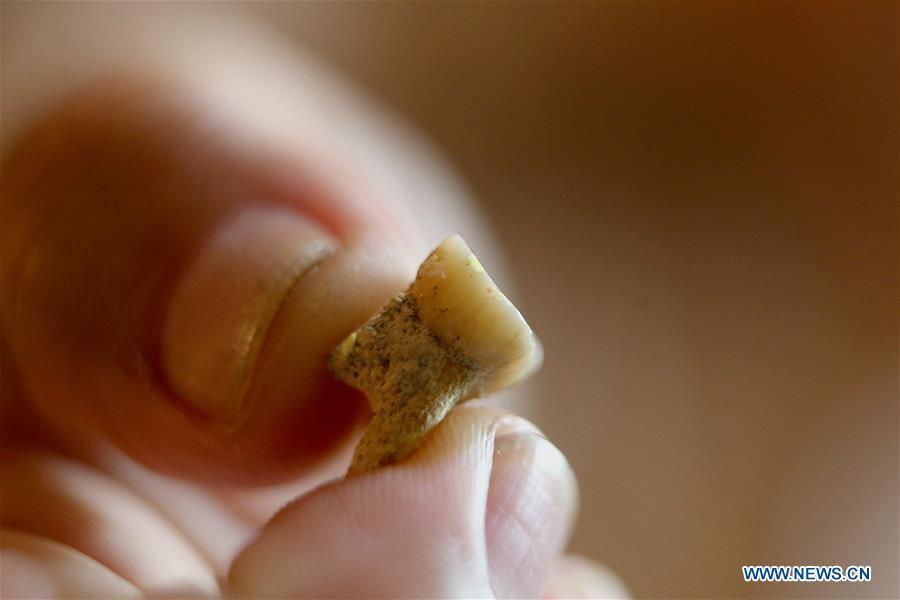
Filipino archeologist Armand Mijares shows a molar tooth as part of the set of fossils of a newly discovered human species called Homo luzonensis at the University of the Philippines in Quezon City, the Philippines, April 11, 2019. Found in Callao Cave on Luzon Island, the 50,000-year-old remains belong to a now extinct species of human. (Xinhua/Rouelle Umali)

The set of fossils of a newly discovered human species called Homo luzonensis is seen at the University of the Philippines in Quezon City, the Philippines, April 11, 2019. Found in Callao Cave on Luzon Island, the 50,000-year-old remains belong to a now extinct species of human. (Xinhua/Rouelle Umali)
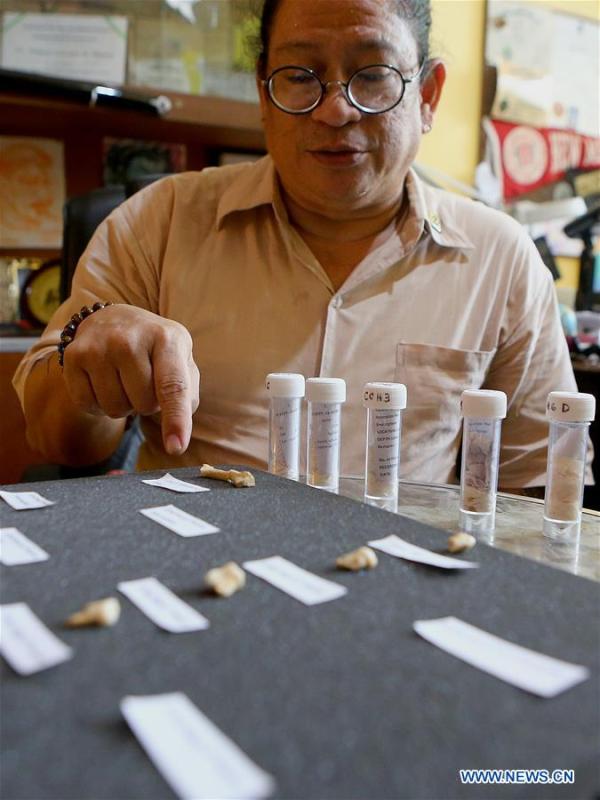
Filipino archeologist Armand Mijares shows the set of fossils of a newly discovered human species called Homo luzonensis at the University of the Philippines in Quezon City, the Philippines, April 11, 2019. Found in Callao Cave on Luzon Island, the 50,000-year-old remains belong to a now extinct species of human. (Xinhua/Rouelle Umali)
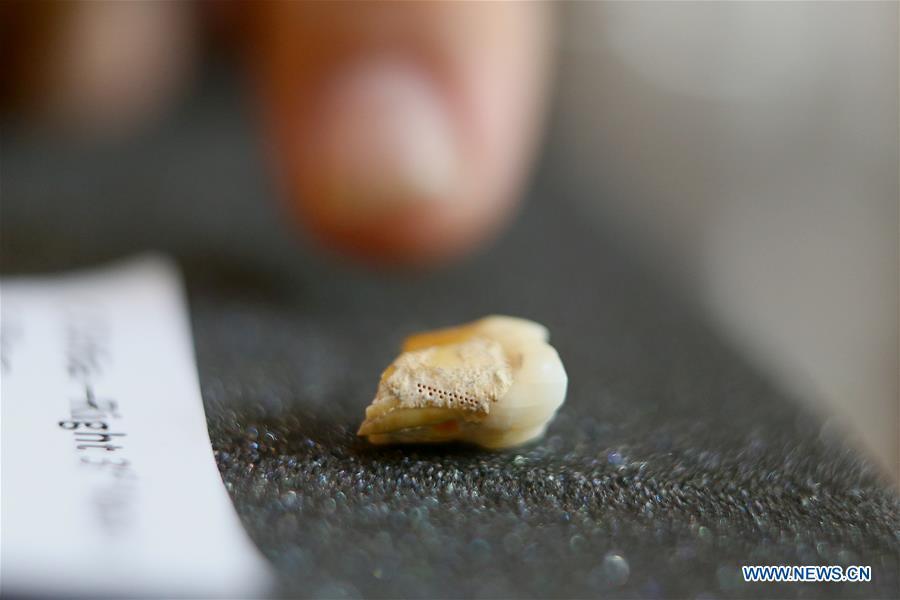
A molar tooth is seen as part of the set of fossils of a newly discovered human species called Homo luzonensis at the University of the Philippines in Quezon City, the Philippines, April 11, 2019. Found in Callao Cave on Luzon Island, the 50,000-year-old remains belong to a now extinct species of human. (Xinhua/Rouelle Umali)
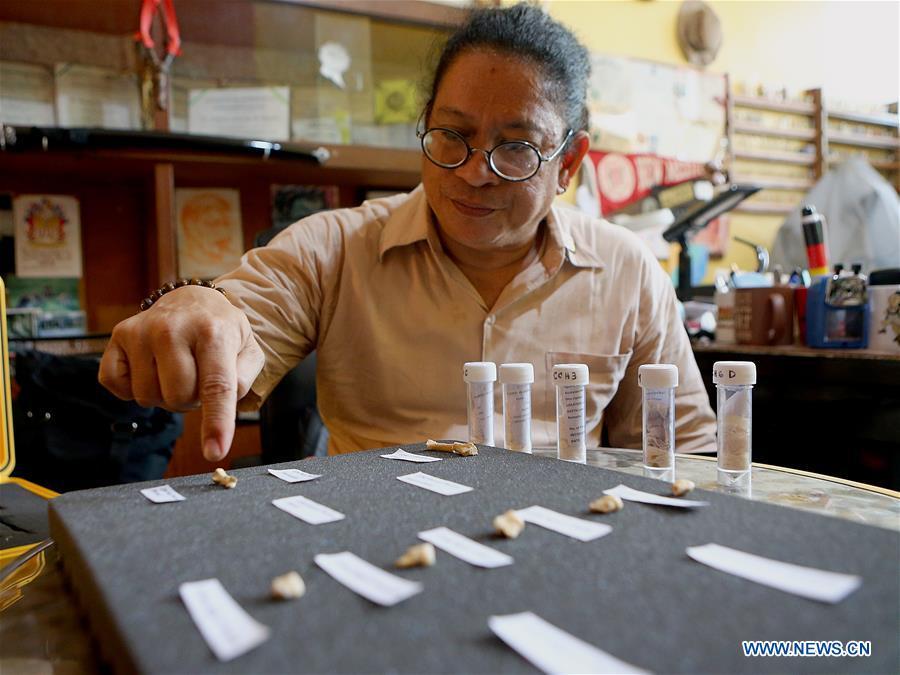
Filipino archeologist Armand Mijares shows the set of fossils of a newly discovered human species called Homo luzonensis at the University of the Philippines in Quezon City, the Philippines, April 11, 2019. Found in Callao Cave on Luzon Island, the 50,000-year-old remains belong to a now extinct species of human. (Xinhua/Rouelle Umali)
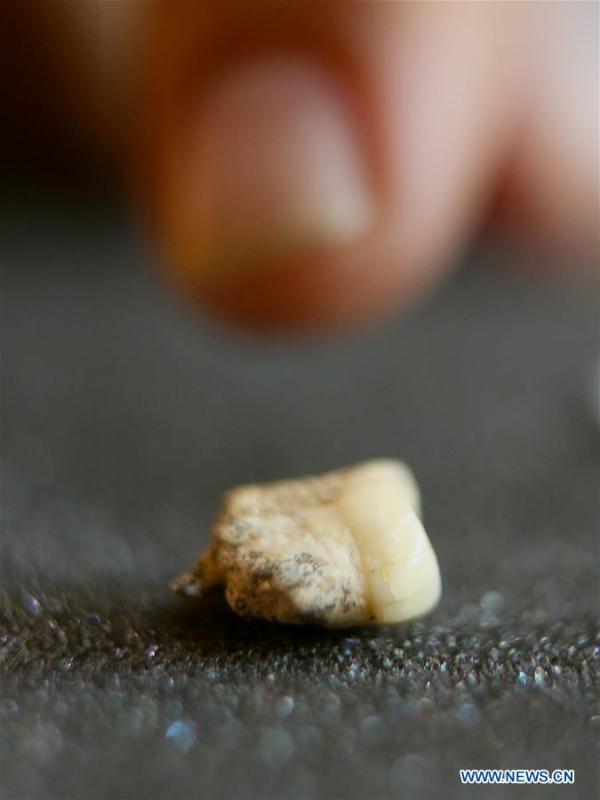
A premolar tooth is seen as part of the set of fossils of a newly discovered human species called Homo luzonensis at the University of the Philippines in Quezon City, the Philippines, April 11, 2019. Found in Callao Cave on Luzon Island, the 50,000-year-old remains belong to a now extinct species of human. (Xinhua/Rouelle Umali)


